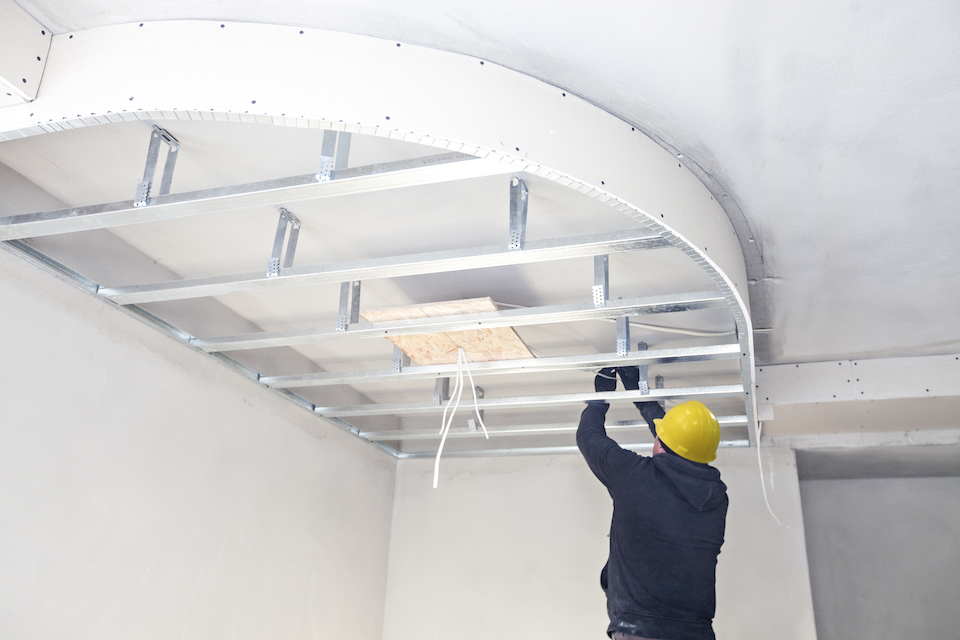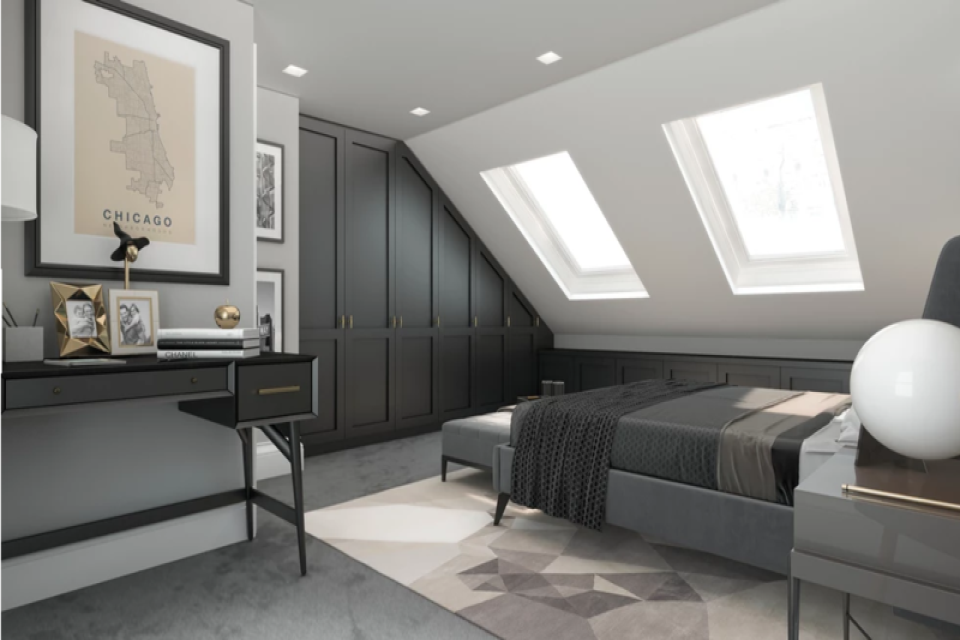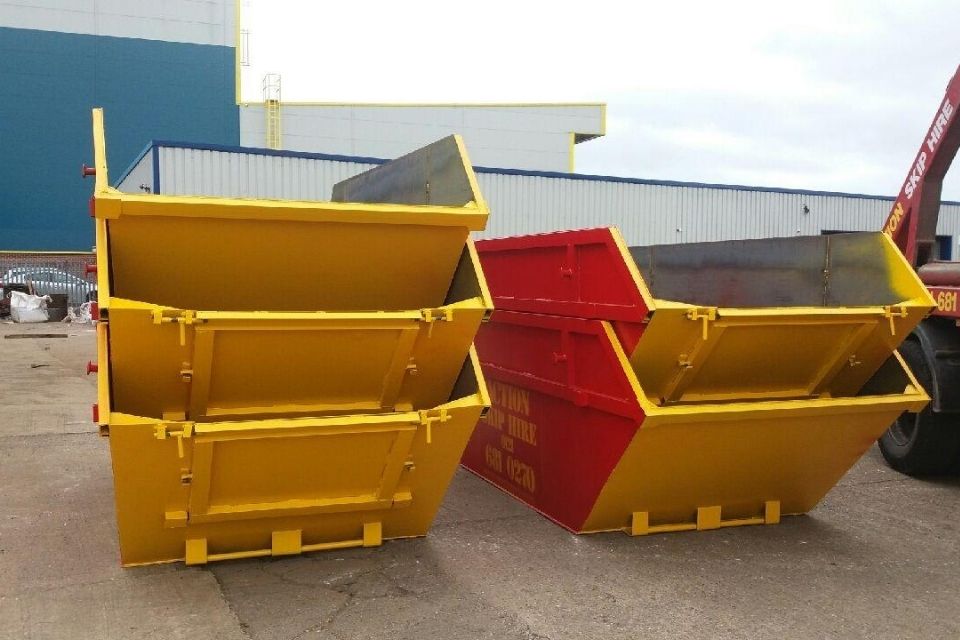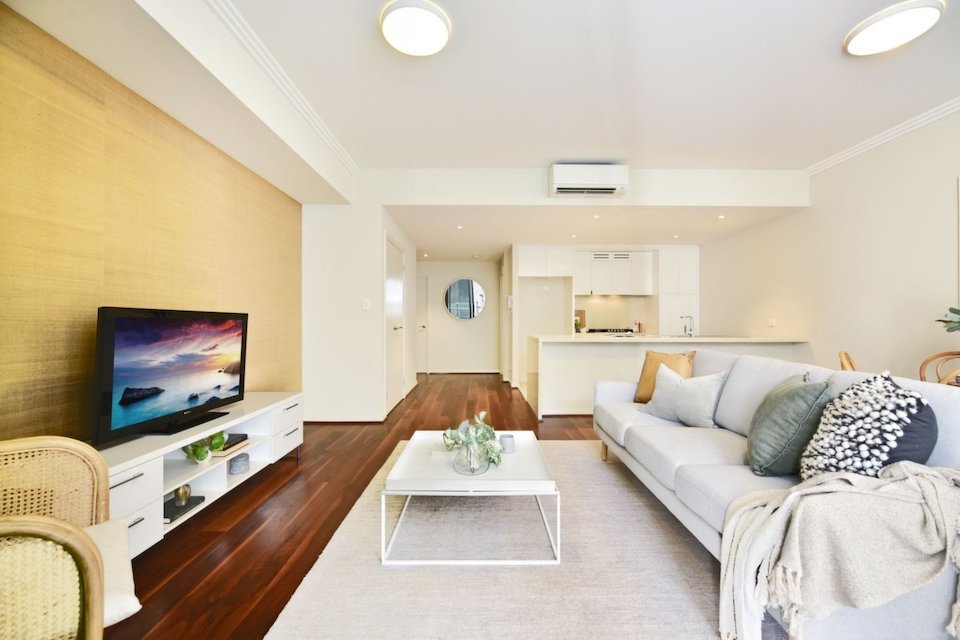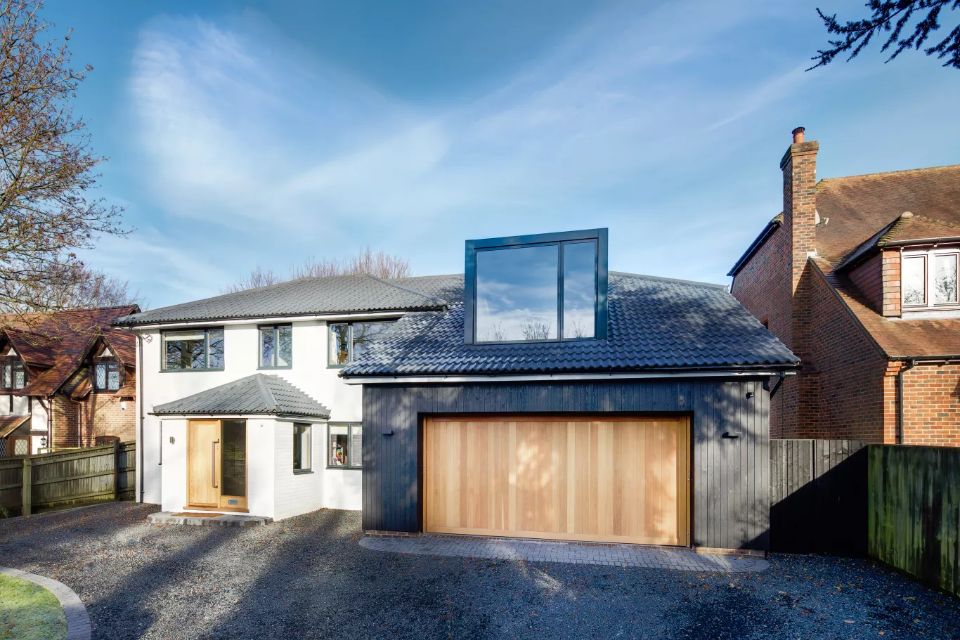How Much Does a Suspended Ceiling Cost to Install?
Are you planning to build a new house? Not sure what kind of ceiling to choose? Drop ceilings, also known as dropped ceilings, suspended ceilings, and false ceilings, are used to describe different types of ceilings.

Even though these terms can be confusing at times, they are essentially the same. The installation procedure for false ceilings differs slightly from that of suspended ceilings, but the result is nearly identical.
For years, suspended ceilings have been a popular option for offices, schools, hospitals, and other commercial buildings across the UK as a cost-effective yet elegant and clean interior design solution.
They've also grown in popularity in the home, with many Britons opting for false ceilings in their kitchens or loft conversions.
A false or suspended ceiling, also known as a dropped ceiling or suspended ceiling, is a set of panels, tiles, or frames that hang a few feet underneath the main structural ceiling, which is made of concrete, or wood planks if your home is made of wood.
A suspended ceiling or false ceiling, for example, is not permanent and is not part of a building's structural foundation. But on the other hand, these dropped ceiling styles serve to conceal or cover the solid framework that would be the actual ceiling.
Here we will go through the different prices of a suspended or false ceiling and what is involved in the cost. So, if you want a new ceiling but are not sure where to start, then here you will find out all the information you need to know.
Because there are hundreds of different types of ceiling tiles on the market today, it is difficult to provide an accurate price for installing a suspended/false ceiling. Its cost varies depending on a variety of other factors.
So, how much does a false or suspended ceiling cost?
In an area of 30m² to 50m², a low-cost ceiling complete with ceiling tiles will cost approximately £20 to £30 per square metre, reducing to approximately £12 to £18 per square metre in larger areas.
In an area of 30m² to 50m², a mid-range ceiling complete with ceiling tiles will cost roughly £25 to £35 per square metre, reducing to approximately £15 to £22 per square metre in larger areas.
If you wanted to add an insulation quilt above the ceiling, based on the thickness, you'd be looking at an extra £5 to £8 per square metre on top of these rates. So in these projects of less than 30m², you would expect a low-cost ceiling to cost between £300 and £400.
These costs should give you an expectation of how much a ceiling will cost you for a local business to supply and install a suspended ceiling, and you should add 10% to 20% for London areas.
Suspended Ceiling Prices
The table below will break down the cost to install a suspended or false ceiling:
| Job | Installation Cost |
|---|---|
| Low-cost ceiling complete with ceiling tiles | £20 - £30 per m² |
| Mid-range ceiling complete with ceiling tiles | £25 - £35 per m² |
| Larger area’s | £15 - £22 per m² |
| Add an insulation quilt | £5 - £8 per m² |
| Projects of less than 30m² | £300 - £400 |
- How Much Does a Suspended Ceiling Cost to Install?
- Supply Cost of a Suspended Ceiling
- Additional Suspended Ceiling Costs
- Factors That Impact Suspended Ceiling Costs
- Suspended Ceiling Installer Cost
- How Long Does It Take to Install a Suspended Ceiling?
- Types of Suspended Ceiling
- How Much Does a Suspended Ceiling Cost to Remove?
- FAQs
- Sources
Supply Cost of a Suspended Ceiling
Suspended ceilings are less expensive than beam or mortar ceilings, and they are a cost-effective way to conceal flaws in the original ceiling and untidy wires and extra installations.
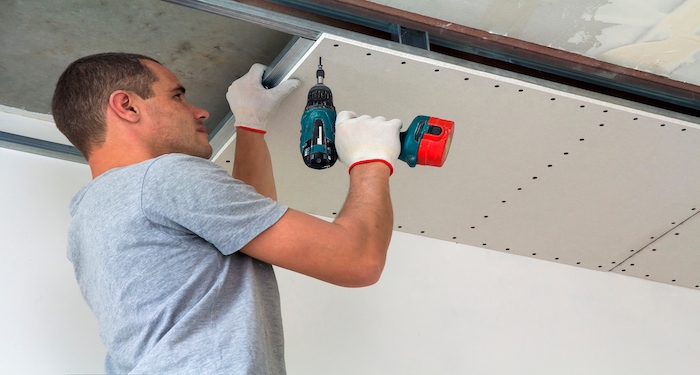
Because they are simple to install, they are also inexpensive to fit and maintain. This section will go over the supply costs for a suspended ceiling so you know how much of your installation cost is made up of materials only.
There are various suspended ceiling tiles available, ranging from low-cost options designed for simple major commercial integrations to specific suspended ceiling tiles aimed at homeowners.
- Plasterboard suspended ceilings - cost between £7 and £9 per m².
- Mineral fibre ceiling tiles - bulk purchases range from £40 to £80
- Fire-Rated ceiling tiles - bulk purchases range from £40 - £60.
- Metal ceiling tiles - cost between £80 and £300.
Having all your materials prepared ahead of time can also avoid last-minute shopping trips. For example, acrylic caulk will cost between £1 and £7, and ceiling grid substances will cost between £50 and £250, depending on the quality.
To finish the installation, you'll need a carpet knife, which ranges in price from £1 to £5 depending on the quality of the knife. The chalk line will cost you between £4 and £11, and clamps will cost between £5 and £7.
A drill bit set will provide you with a variety of drill bits to finish the work; these typically cost between £20 and £30. A drill/driver, preferably cordless, will cost between £30 and £50.
A hammer and tape measure will cost between £2 and £7, and a drywall circle gauge will cost between £7 and £20. Tin snips typically cost £7 - £20, and you'll also need b lines, a lag screwdriver (£2 - £11), a pop-in riveter (£20 - £30), and gloves (£1 - £3).
The table below will break down the supply costs to install a suspended or false ceiling:
| Supply | Cost |
|---|---|
| Plasterboard suspended ceilings | £7 - £9 per m² |
| Mineral fibre tiles | £40 - £80 |
| Fire-Rated | £40 - £60 |
| Metal ceiling tiles | £80 - £300 |
| Acrylic caulk | £1 - £8 |
| Ceiling grid substances | £50 - £250 |
| Carpet knife | £1 - £5 |
| Chalk line | £4 - £11 |
| Clamps | £5 - £7 |
| A drill bit set | £20 - £30 |
| Drill/driver | £30 - £50 |
| Hammer | £2 - £7 |
| Tape measure | £2 - £7 |
| Drywall gauge | £7 - £20 |
| Tin snips | £7 - £20 |
| Lag screwdriver | £2 - £11 |
| Pop in riveter | £20 - £30 |
| Gloves | £1 - £3 |
Additional Suspended Ceiling Costs
When installing a suspended or false ceiling, additional costs could add up to increase the overall cost of your suspended ceiling. Here we will go over the additional costs so you can try and avoid them to keep your installation at a lower cost.
Plastering a Ceiling
Plastering a ceiling typically costs between £250 and £300. The cost, however, will be determined by the size of the ceiling and the method used.
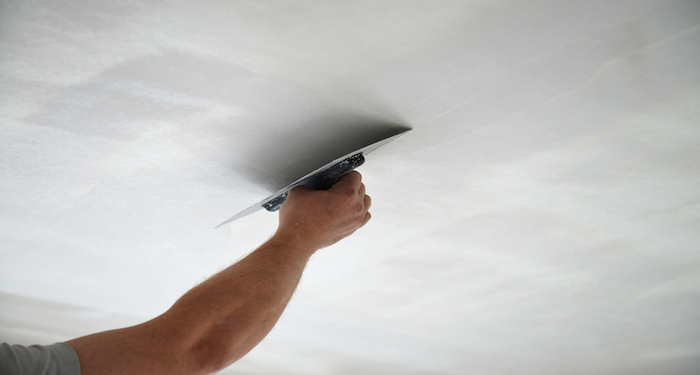
| Ceiling Size | Plasterboard Cost | Wet Plaster Cost |
|---|---|---|
| Small | £400 to £500 | £200 to £400 |
| Medium | £550 to £700 | £300 to £450 |
| Large | £800 to £1,000 | £450 to £750 |
In most cases, the pricing is straightforward. A labourer will charge a daily rate of around £125 to £175. The price may rise to around £175 to £225 if the plastering proves to be more difficult than it would be in most cases.
Painting and Decorating
When redecorating, keep the costs of interior painting for different projects in mind. The average cost of painting a room, for example, ranges from £180 for a small bedroom to £600 for a large living room.
You will also have to consider the painting and decorating costs for other fixtures. Some examples are below:
| Job | Estimated Cost |
|---|---|
| Painting Skirting Boards | £180 to £350 |
| Painting Windows | £400 to £1,500 |
| Painting Doors | £220 to £1,600 |
| Re-painting Kitchen Cabinets | £600 to £1,000 |
Wallpapering is yet another high decorating cost, with prices ranging from £180 for a small room to £600 to strip as well as hang the wallpaper, while installing internal cladding costs between £1500 and £2500.
Skip Hire
The cost of hiring a skip varies depending on factors such as the type and size of the skip. The type will also have an impact as roll-on roll-off skips are less expensive per yard than a basic skip. The costs involved are listed below:
| Skip Type / Size | Estimated Cost |
|---|---|
| 2-yard Skip | £70 to £100 |
| 4-yard Skip | £100 to £160 |
| 6-yard Skip | £120 to £190 |
| 8-yard Skip | £150 to £370 |
| 10-yard Skip | £180 to £410 |
| 12-yard Skip | £220 to £450 |
| 14-yard Skip | £230 to £460 |
| 16-yard Skip | £240 to £480 |
| 18-yard Skip | £280 to £500 |
| Roll-on Roll-off Skip | £300 to £500 |
| Lockable Skip | £200 to £300 |
Other price factors involve the number of tradespeople that have been hired to deliver and pick up the skip, the easy accessibility to your property, and your location. Because skip hire cost varies across the country, where you live will have an influence on the price of hiring a skip.
Hiring a skip in the southeast is likely to be higher than the national average. However, costs of skips in the north of England, Scotland, as well as Northern Ireland are usually lower than in the rest of the country.
New Lighting
The cost of new lighting will vary according to how much lighting you require in your room as well as how much space you have.
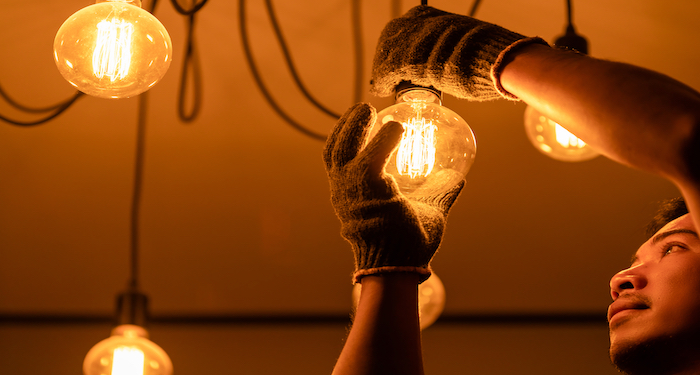
Installation costs approximately £60 for a basic fitting and up to £1000 for lighting fixtures and wiring.
If you want to redecorate your living room or bedroom, you may want to consider installing a ceiling light, which can range in price from £6 for a simple flush mount light to £2000 or more for a chandelier.
If you want to install new light fixtures in your kitchen, you could choose pendant lights to hang over your kitchen cabinets, which typically cost between £30 and £500 per light.
Factors That Impact Suspended Ceiling Costs
Here are some other cost factors to consider regarding suspended ceilings:
Number of Tradespeople
The number of labourers you need to hire may be significant depending on the complexity of the job. Obviously, the more skilled workers you hire, the larger the hourly labour rate will be; however, if they collaborate well together as a team, the time it takes to complete the work may be cut in half, cancelling out the above factor.
This may or may not occur, and if the team works particularly well together, you may even save money to employ a team rather than a single person. In most cases, this is a one-person job.
Materials
Suspended ceilings are made of a variety of materials, ranging from MDF and other wood grains to plastics, as well as other minerals/silicone fibres or tiles that can reflect light to develop the illusion of more space.
Wood is typically the less expensive option, but plastic tiling can be found at reasonable prices, especially if you aren't concerned with the aesthetic appeal of such a ceiling.
Light Systems
While all suspended ceilings have different lighting options, low-energy halogen bulbs and extensive smart light systems that work across multiple suspended ceilings will usually cost a little more than standard industrial rectangular fittings.
Special Features
Some suspended or false ceilings can also be installed with a variety of extra features, such as air conditioning, speakers, fire sprinklers, and even a variety of colours or patterns for the pickiest customer – but the more you add to your basic ceiling, the more it will cost.
Fire Resistance
Fire-resistant suspended ceilings include a special resin-coated 60mm barrier, which can make a significant difference in protecting your overall suspended ceiling investment.

It does, however, cost twice or three times as much as a standard suspended ceiling, so make sure you are able to afford it before signing the contract.
Access To and Within Your Building
If you live in a busy city, the worker will have to factor in extras such as parking costs when drafting quotes, as this is much more expensive in a city than it would be in a rural setting.
Furthermore, for prices to remain low, the floor on which the ceiling must be installed should really be easier to access. This means that installing a suspended ceiling on the bottom floor is less expensive than installing one on the other floors.
The Original Ceiling's Height
A higher ceiling will require more time to install, increasing the cost.
Suspended Ceiling Installer Cost
Installing a suspended ceiling is not the easiest project to complete, and unless you are highly trained to do so, it is not recommended that you do it yourself.
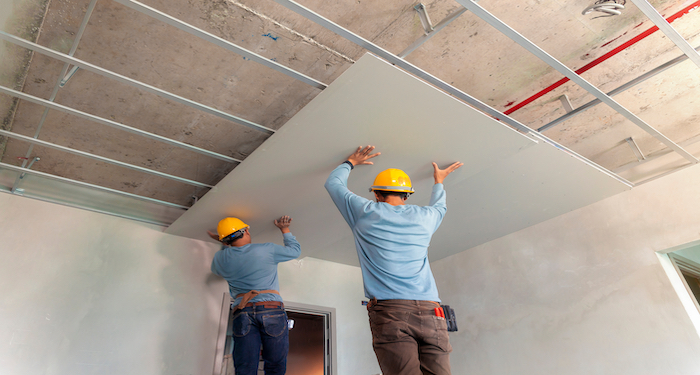
Keeping this in mind, you can purchase DIY kits for the project, which cost around £400 - £420 per 600mm² tile covering 10m².
Even if you purchase this kit, there is a potential risk of injury associated with climbing a ladder to access your building's ceiling.
If suspended ceilings are not properly installed, it may collapse, causing damage to the components beneath.
When estimating labour costs, it is difficult to answer accurately because the price is determined by a variety of factors including:
- Ceiling Height
- Ceiling Length
- If it is a single room vs a corridor
- If the ceiling is straight vs curved
A corridor ceiling takes longer to install than a single room due to the extra cutting of the edge tiles.
For labour costs, it will cost you between £15 and £25 per m² in areas ranging from 50 to 250m². If the area is between 1000 and 5000m², installation could cost as little as £11-£14/m². Or it will cost £150 - £200 for a day’s work, therefore depending on how long it takes to complete the job will affect the labour costs.
If you hire a tradesperson to install your suspended or false ceiling, make sure they are fully trained and qualified to do the job. Always check the warranty of your new product to ensure that your costs are part of a wise investment that will not let you down!
The table below will break down the tradespeople's costs to install a suspended ceiling:
| Labour | Cost |
|---|---|
| 50 to 250m² areas | £15 - £25 per m² |
| 1000 and 5000m² | £11 - £14 per m² |
| Days’ work | £150 - £200 |
How Long Does It Take to Install a Suspended Ceiling?
Most people believe that a false or suspended ceiling installation can be completed in a couple of hours, but it will most likely take a little longer.
Suspended ceiling projects, especially ones that are starting from scratch, will take time. Make sure to communicate your time requirements with your builders, or if you're doing everything on your own, keep these things in mind when planning a timeline.
The duration of having work completed in your home can be affected by different factors, including your current ceiling situation and how much preparation is required before the installation can start.
Tasks Involved In Installing A Suspended Ceiling
Installing a suspended ceiling typically begins with setting up the track system. This process involves measuring and marking the ceiling perimeter, securing the wall angle trim, and suspending the main runners and cross tees from the structural ceiling using wire hangers. This setup alone can take anywhere from 2 to 4 hours for a small to medium-sized room, depending on ceiling height and complexity.
Once the framework is in place, the ceiling tiles are inserted into the grid. This part of the job is generally quicker, taking approximately 1 to 2 hours to complete for an average room, assuming minimal cutting is required. The tiles sit within the suspended grid a few inches below the original ceiling, helping enhance acoustics by improving sound absorption and reducing echo.
An alternative, though less common, method involves attaching the tiles directly to the ceiling surface using adhesive or mechanical fixings. This method can be faster in terms of setup, potentially taking 3 to 5 hours in total for a similar space, but it lacks the sound-dampening benefits and accessibility of a suspended grid system.
In total, installing a suspended ceiling in a typical room can take anywhere from 4 to 8 hours, depending on the method used, ceiling conditions, and the experience of the installer.
If you're a first-timer doing the project on your own, expect it to take longer, perhaps a week or so.
Types of Suspended Ceiling
A false ceiling is a form of architecture in which a secondary ceiling is installed beneath the original ceiling. This additional ceiling can be made of a variety of materials such as plaster, metal, or wood.
Because they are lowered or hung from the main ceiling, false ceilings are also known as dropped ceilings or suspended ceilings.
Suspended ceilings or metal ceiling tiles are most typically found in commercial settings like offices and restaurants. They are, however, becoming increasingly popular in residential settings.
In a residential setting, the main advantage of a suspended ceiling is that it can add interest and personality to a room. It can make the room appear larger and more open.
A false ceiling could be installed in any room of your home, but it is most frequently used in kitchens, bathrooms, and bedrooms.
But what are the different types of false or suspended ceilings?
In this section, we will go through the different types of false or suspended ceilings and their pros and cons, so you know which one will suit your home more when the time comes!
Concealed Ceiling
Choose concealed grip if you want a clean and smooth look for your suspended ceiling. The grid system is hidden behind acoustical tiles in this type of suspended ceiling.
The benefit of installing concealed grip suspended ceiling is its appealing and aesthetic appearance. On the other hand, it prevents easy access to an area above the ceiling for repair. Furthermore, it can be more expensive than other types.
Pros:
- Clean and smooth
Cons:
- It can be expensive
Gypsum Board and Plaster Suspended Ceilings
This type of suspended and false ceiling is most commonly used in public buildings such as theatres, lobbies, and auditoriums, among other places.
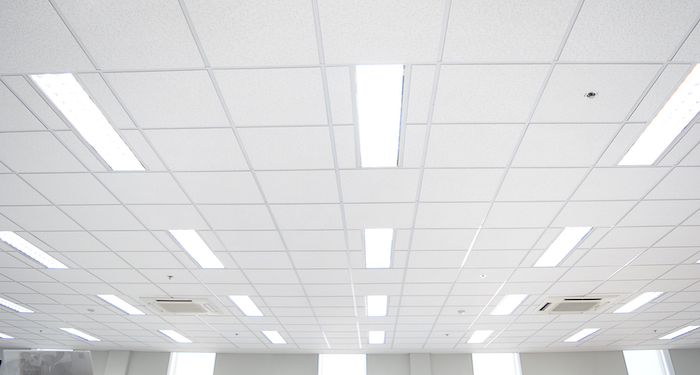
A suspended ceiling made of gypsum board and plaster can be mounted to simple light gauge steels, or some special framing elements can be used.
While basic light gauge steels are suspended on cables, special framing components designed specifically for this type of ceiling and available in a variety of complex shapes are available.
The most significant advantage of installing a gypsum board as well as a plaster suspended ceiling is the increased value it adds to your room. It has a distinct design that will give your room a modern appearance.
Pros:
- Adds value to the home
- Unique look
Cons:
- Mostly used in theatres
Exposed Grid Ceiling
It is a popular and low-cost type of suspended ceiling. The composition of the exposed grid suspended ceiling distinguishes it from other types. It is made up of long metal strips known as mains. These mains are linked together with tees. The short metal pieces are known as tees.
Tees and mains work together to form a grid system. Suspended ceiling tiles are used to fill the grid system mentioned above. A standard metal frame surrounds each tile of the exposed grid. This frame is available in a variety of sizes.
Pros:
- Low cost
- Available in different sizes
Cons:
- None
Fire Resistant Ceiling
Because of its resistance to fire, this type of suspended ceiling is preferred. It is made of a specially designed fire-resistant material. The installation of fire-resistance-rated suspended ceilings is a process that requires extensive knowledge and skills.
Furthermore, lighting fixtures used in this type of ceiling must be backed up with a fire-resistant material. Simply put, every component of this type of suspended ceiling, including the panels that allow access to repair and maintain ducts and pipes, must be fire-resistant.
Pros:
- Resistant to fire
Cons:
- Hard to install
Ceilings with Suspended Drywall
Hangers and wires are used instead of metal grids in a suspended drywall ceiling. You can choose this type of suspended ceiling if you do not want to spend a lot of money on suspended ceilings with frames. Because of its unique design, it has an appealing appearance.
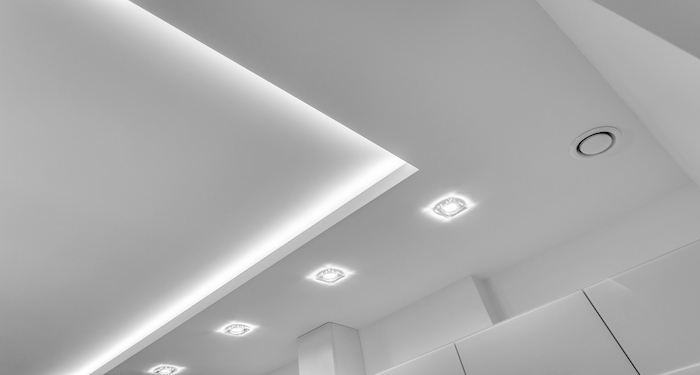
Pros:
- Affordable
- Unique design
Cons:
- Hangers and wires used
False Ceilings with Tiles
A false tiled ceiling can give any room a simple yet sophisticated look. Metal, wood, mineral wool, gypsum, glass fibres or plastic are common materials.
Because of its basic appearance and affordable cost, it is one of the most used suspended ceilings. As a result, these ceilings can be found for decoration in flats, shops, offices, and homes.
Pros:
- Found in flats, offices, and homes
- Simple appearance
- Low cost
Cons:
- Not popular due to its simple design
Suspended Ceilings Made of Aluminium
Whether it is a small bathroom in a condo or a meeting room in a large industrial high-rise, you can improve the look and appeal of the space by installing an aluminium suspended ceiling. It has a metal surface that ensures proper reflection of natural and artificial light.
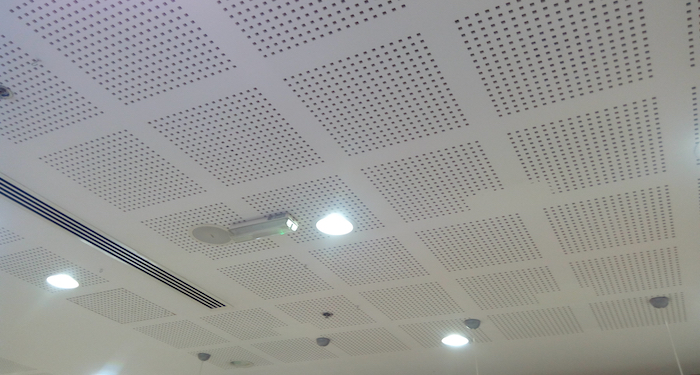
As a result, it can make your room appear well-lit and spacious. The ability of this type of suspended ceiling to fit in any room and improve its appeal is the main reason why it is preferred by many.
Aluminium is a well-known long-lasting material. It does not need a lot of upkeep to keep its lustre and toughness. It is considered safe for human health due to its eco-friendly properties.
As a result, it is recommended that it be used in medical institutions. Because of the numerous benefits it offers, many parents prefer to have this type of suspended ceiling installed in their children's rooms as well.
When it comes to aluminium suspended ceilings, there is a wide range of options available. There are numerous options available, ranging from rack to cassette and Griyalto.
Each type has its own set of qualities; however, Griyalto is the most sought-after due to its distinct characteristics. It is also known as the costliest suspended ceiling in the category of aluminium ceilings.
Pros:
- It can make your room appear well-lit and spacious
- Long-lasting
Cons:
- Expensive
How Much Does a Suspended Ceiling Cost to Remove?
When removing a drop ceiling, you may be charged between £2 and £7 per square foot. The cost to demo the interior materials for a 10-foot-by-12-foot room could range from £240 to £840.
You should also budget £60 per square foot for the cost of repairing the newly exposed ceiling. Drywall, paint, and lighting raise the cost even further.
FAQs
Q: What have suspended ceiling tiles made of?
A: Although other materials can be used, most suspended ceiling systems are made of steel grid and acoustical tiles or gypsum white vinyl tiles. Metal hanger wires are being used to suspend these systems from three inches to over a foot (7.6 cm to 30.5 cm) underneath the deck.
Q: What is a false ceiling?
A: False ceilings, also known as suspended ceilings, are distinguished from standard ceilings by their proximity to the ground beneath the original ceiling structure. An empty space between the initial ceiling and the false ceiling is usually present, which can be useful for soundproofing apartments in much the same building.
Q: Is installing a suspended ceiling difficult?
A: Suspended ceilings are the ideal option for basement rooms with ducts, pipes, and cables that require direct access. The setup is simple and takes as little as a weekend. The finished ceiling height must be at least 7 1/2'. Check the building codes in your area.
Q: How thick is a suspended ceiling?
A: T shapes that are 15/16" wide are the most commonly used; however, 9/16" wide T shapes are becoming more popular. Suspended ceiling producers also produce a variety of shapes that provide the designer with aesthetic options. To add depth to a ceiling, a stepped T shape is frequently used with regular panels.
Q: How long does a false ceiling last?
A: They have a long life ahead of them. A POP false ceiling could indeed easily last for 15-20 years in the absence of external damage.

